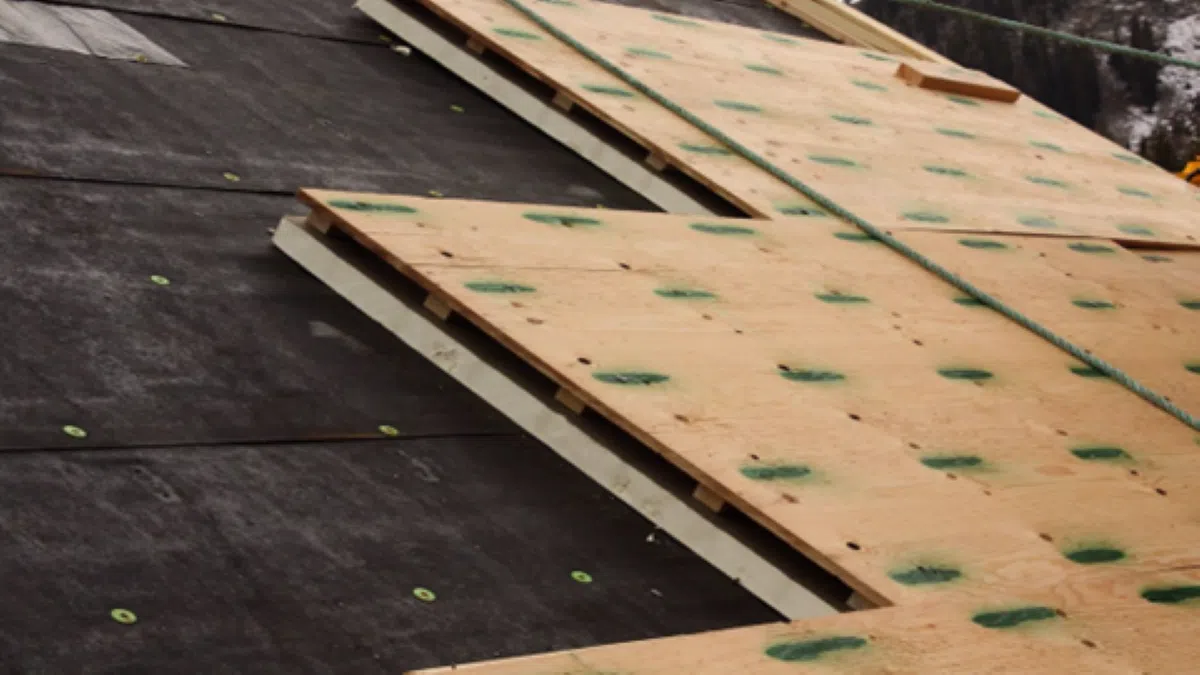
November 14, 2022
Despite being hidden inside the walls and roof of a building, the insulation materials used within a structure play an extremely important role in determining the energy efficiency of a building envelope. Insulation materials are designed with the intended purpose of preventing heat exchange between the inside of the building and its exterior environment. Many different types of materials can be used to make home and building insulation and depending on their thermal properties can offer a range of different benefits.
Insulation materials are characterized by their ability to resist heat flow through them – a property formally defined as their thermal resistance. When referring to insulation materials specifically, thermal resistance is denoted as a material’s R-value with higher values reflecting a higher thermal resistance. Materials with a high R-value are excellent at preventing the movement or loss of heat.
This is a desirable physical property for buildings located both in warmer and cooler climates, as a high R-valued material is just as effective at keeping heat out as it is at keeping the heat in. At a time when electrical bills and energy emission taxes are at an all-time high, the ability of a structure to maintain a stable interior temperature without demanding a substantial amount of fuel and energy is desirable both in terms of limiting potential environmental impacts and lowering the consumer’s electricity bills.
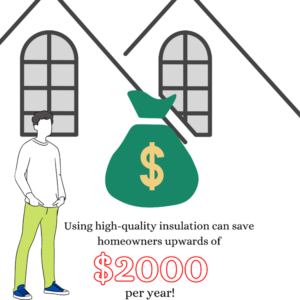
Figure 1: Image detailing an estimate of the average amount of money lost towards heating and cooling a building containing low-quality roof insulation
When attempting to quantify the environmental and economic benefits associated with a certain type of insulation material, it is important to consider both the amount of energy and raw materials required to manufacture the insulation along with its average lifespan and resistance to degradation once it has been installed in a building envelope.
Some insulation materials such as wool batt insulation or cellulose are more natural regarding their chemical makeup but offer less thermal protection compared to petroleum-based products like polystyrene and polyisocyanurate foam. Because natural insulation materials are generally poor thermal performers, they result in higher energy costs and the release of greater amounts of greenhouse gas emissions once they are installed.
At the end of the day, this will end up costing the building owner more in both energy bills and carbon emission costs. As a rule of thumb, the bigger the building is, the bigger the savings will be in terms of energy and greenhouse gas-related taxes.
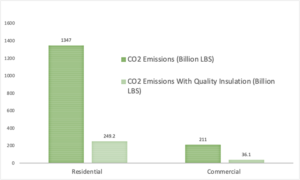
Figure 2: Graph detailing the amount of CO2 emissions (Billion Lbs.) released from residential and commercial buildings with and without quality insulation
Many commercial building owners and operators are starting to come to the realization that maintaining a tight thermal envelope will save them money as they are starting to prioritize investing in high-quality insulation materials. Polyisocyanurate (PolyISO) is currently the most popular material for buildings that have a large flat roof, as it accounts for over 60% of all insulation installed on flat roofs across North America within the past decade.
Much of polyISO’s popularity can be attributed to its high R-value per inch of material which averages around an R5 or R6 compared to other types of foam-based insulations that hover around an R-value of R3 to R4. Aside from offering a superior R-value, PolyISO also provides excellent fire and moisture resistance, water-repelling characteristics, desirable dimensional stability, and resistance to a number of solvents commonly found in construction adhesives.
PolyISO insulation is characterized as a rigid, closed-cell, continuous foam board insulation manufactured from liquid polyisocyanurate foam sandwiched between fibreglass-reinforced facers. These facers are most commonly made of aluminum foil; however, they can also be primarily formed from organic felt or inorganic fibreglass mats.
The cells that make up insulation are referred to as ‘closed’ because they are aggressively pressed together so that air and moisture are unable to get in between the naturally present pores that are already in the foam. The double layer of facers also offers advanced moisture resistance and adhesion compared to expanded polystyrene (EPS) which only contains a single facer layer.
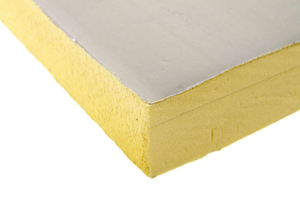
Figure 3: Close up inspection of polyISO insulation
PolyISO is manufactured using a low-impact process in which distinct amounts of chemicals containing blowing agents are permitted to react together under controlled temperatures after being sandwiched between two facers. This controlled chemical reaction results in the adhesion of the liquid polyisocyanurate foam to form a lightweight, thermoset insulation material.
Following this process, the insulation can be cut into the desired sizes, packaged with a water-resistant tarpaulin material, and stored in a dry area until it is needed for installation on a roof. The blowing agents used to make polyISO insulation are free of HCFs, CFCs, or HCFCs with zero ozone-depleting potential and virtually no global warming potential. This facilitates a healthier living environment for occupants at risk of breathing harmful fumes and improves global sustainability efforts.
The low thermal conductivity of these high molecular weight blowing agents used to create the inner layer between the two protective facer barriers is the main contributor to the low thermal conductivity and high thermal resistance of polyISO insulation.
Despite this insulation material having an initial superior R-value, it is still at risk of degradation or loss of thermal protection that occurs when the blowing agent gas slowly starts to diffuse out of the closed cells of the interior foam or dissolve into the surrounding polymer matrix that functions to keep these insulation boards rigid and stable.
Simultaneously, the small molecules that are present in the air circulating within the external environment such as nitrogen and oxygen start to enter the closed foam cells. The blowing agent is lost at roughly 1/3rd of the rate of air diffusion into the foam. This ongoing phenomenon results in the continuous loss of the insulation’s thermal resistance and without replacement or repair can lead to a substantial amount of energy loss that reflects the inability of the material to keep heat in.
Technically speaking, this is referred to as a material’s long-term thermal resistance (LTTR) and remains an extremely important criterion for the design performance of thermal insulating systems and its contribution to energy consumption in large commercial buildings.
PolyISO insulation is available in a variety of thicknesses that come in increments of one inch. A single inch is the thinnest amount of material available on the market and has an R-value of 6. Every time an extra inch of insulation is added to this base minimum thickness, the R-value will roughly double indicating extra thermal protection. 100 sq. ft of 1-inch-thick board costs on average $67 USD, however, this is actually the costliest way for a consumer to purchase this type of insulation.
Purchasing polyISO boards that are slightly thicker (such as 2” or 3”) will cost approximately 40% less and offer a substantially higher R-value and thermal resistance. For example, achieving a base R-value of 18 would require a 3” board of polyISO, costing only $120-$125 USD per 100 sq. ft. This can lead to massive savings for a homeowner, especially in regions and jurisdictions that set building codes outlining a minimum R-value required for a roof insulation material.
The prices of polyISO are subject to change and are generally more expensive to purchase and install in Northern climates than in Southern ones due to their elevated demand.
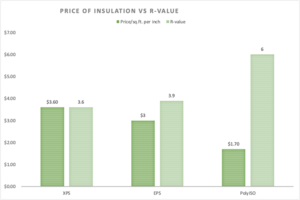
Figure 4: Comparison of the price vs R-value delivered by the three most popular types of flat roof insulation
Numerous studies have claimed that polyISO surpasses all other insulation materials in terms of its R-value per inch and ability to provide the best energy loss protection in several different climates. PolyISO also offers superior fire resistance compared to other types of rigid foam insulation due to it being characterized as a thermoset material that can form a protective char layer when exposed to an abundance of heat. Other types of insulation materials, such as extruded polystyrene (XPS), are classified as thermoplastics and melt when exposed to a heat source. This can cause the insulation to drip on surfaces below, increasing the potential for structural damage.
PolyISO meets several strict fire performance standards for both roof and wall applications in the FM Class 1 Approvals (FM 4450/4470), UL 1256, CAN/ULC S126M and NFPA 285 testing. PolyISO is sandwiched between two layers of organic or inorganic facers when it is installed which provides the material with a number of benefits including moisture resistance and enhanced adhesion.
PolyISO’s performance in these categories is significantly higher than XPS which is limited to a single facer type and offers a lower performance in terms of its ability to withstand moisture infiltration. Additional resistance to moisture is a key component in determining how a material will stand up against the natural wear and tear it experiences over time as water damage is one of the leading causes of a compromised building envelope.
Homeowners and large companies alike are continuing to emphasize the importance of maintaining an energetically efficient structure much of which is reliant on the type of insulation installed in the walls and ceiling of the said structure. PolyISO is undeniably one of the best insulation materials that are currently on the market and offers a range of environmental and economic benefits that extend from its manufacturing process to its long-term thermal resistance and durability against extremely cold environmental conditions.
As material chemistry and design continues to advance to reflect the demand for lower emissions and rare-mineral use, the future of polyISO will inevitably change and improve for further use and application in ensuring that buildings are utilizing the best insulation material possible.
2022 Insulation Cost | Estimate Foam Board Insulation Prices | RoofCalc.org. (n.d.). Retrieved August 14, 2022, from https://www.roofcalc.org/flat-roof-insulation-cost/
Canada, E. and C. C. (2010, July 6). Greenhouse gas emissions from large facilities [Research]. https://www.canada.ca/en/environment-climate-change/services/environmental-indicators/greenhouse-gas-emissions/large-facilities.html
essentialflat. (2014, September 8). How Long Does Roof Insulation Last. Essential Flat Roofing Services. http://essentialflatroofing.com/roof-insulation/
Khuenkeao, T., Petchwattana, N., & Covavisaruch, S. (2016). Thermal and mechanical properties of bioplastic poly(lactic acid) compounded with silicone rubber and talc. 080005. https://doi.org/10.1063/1.4942294
Mukhopadhyaya, P., Bomberg, M., Kumaran, M., Drouin, M., Lackey, J., van Reenen, D., & Normandin, N. (2002). Long-Term Thermal Resistance of Polyisocyanurate Foam Insulation with Impermeable Facers. In A. Desjarlais & R. Zarr (Eds.), Insulation Materials: Testing and Applications: 4 (pp. 351-351–15). ASTM International. https://doi.org/10.1520/STP11024S
Polyiso Insulation: What is Polyisocyanurate Insulation? Your FAQs Answered. (n.d.). Atlas Roof & Wall Insulation. Retrieved October 24, 2022, from https://www.atlasrwi.com/polyiso-insulation/
The difference between Polyiso, EPS & XPS Foam Insulation & Styrofoam. (n.d.). Retrieved October 24, 2022, from https://www.ecohome.net/guides/2254/polyisocyanurate-foam-is-a-hot-new-building-product-learn-where-and-where-not-to-use-it/
West, R. (2017, October 16). Rigid-Foam Insulation Commercial Roofing: Polyiso vs XPS vs EPS. Cleveland, Ohio | Commercial Roofing Contractor.